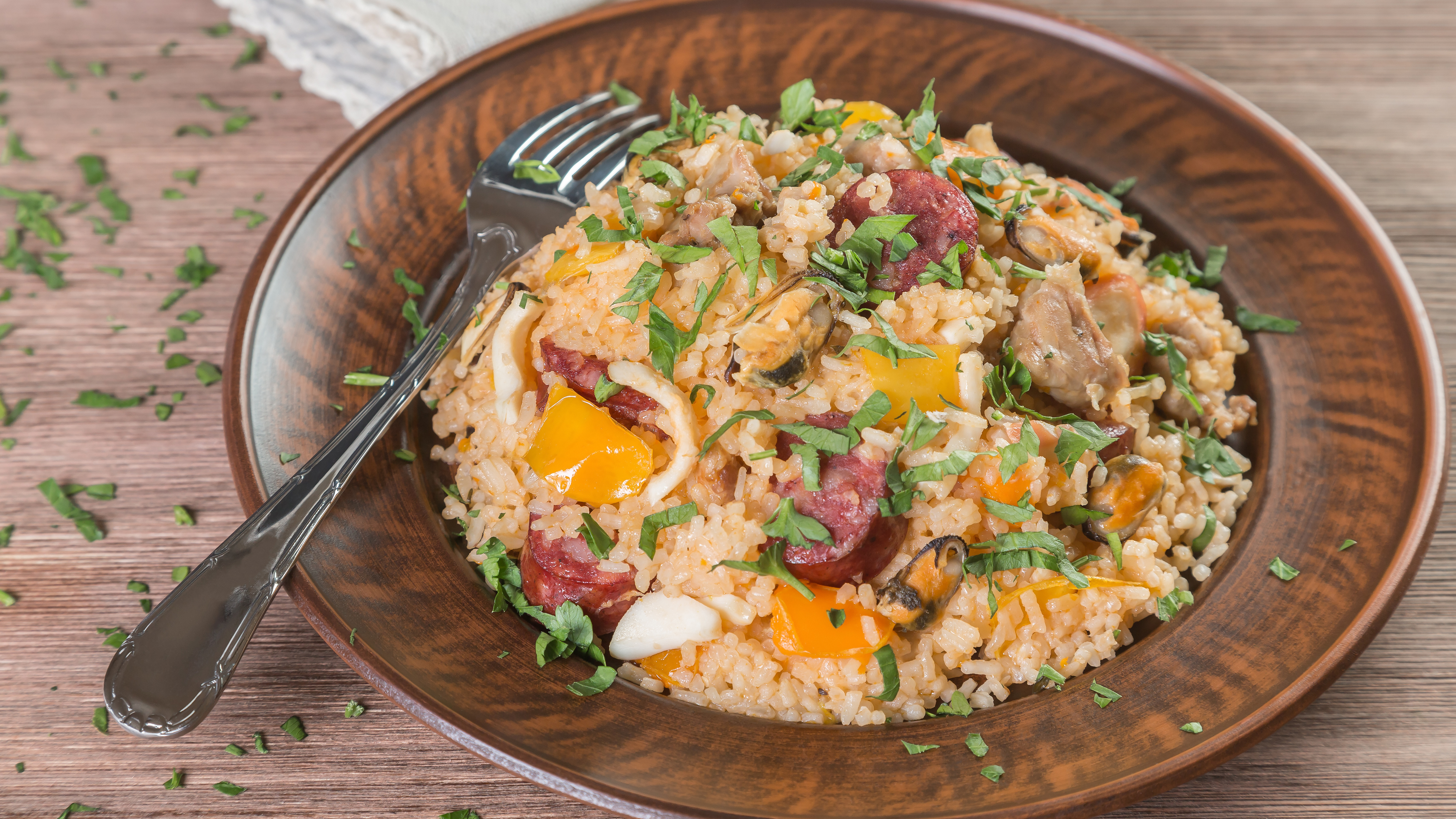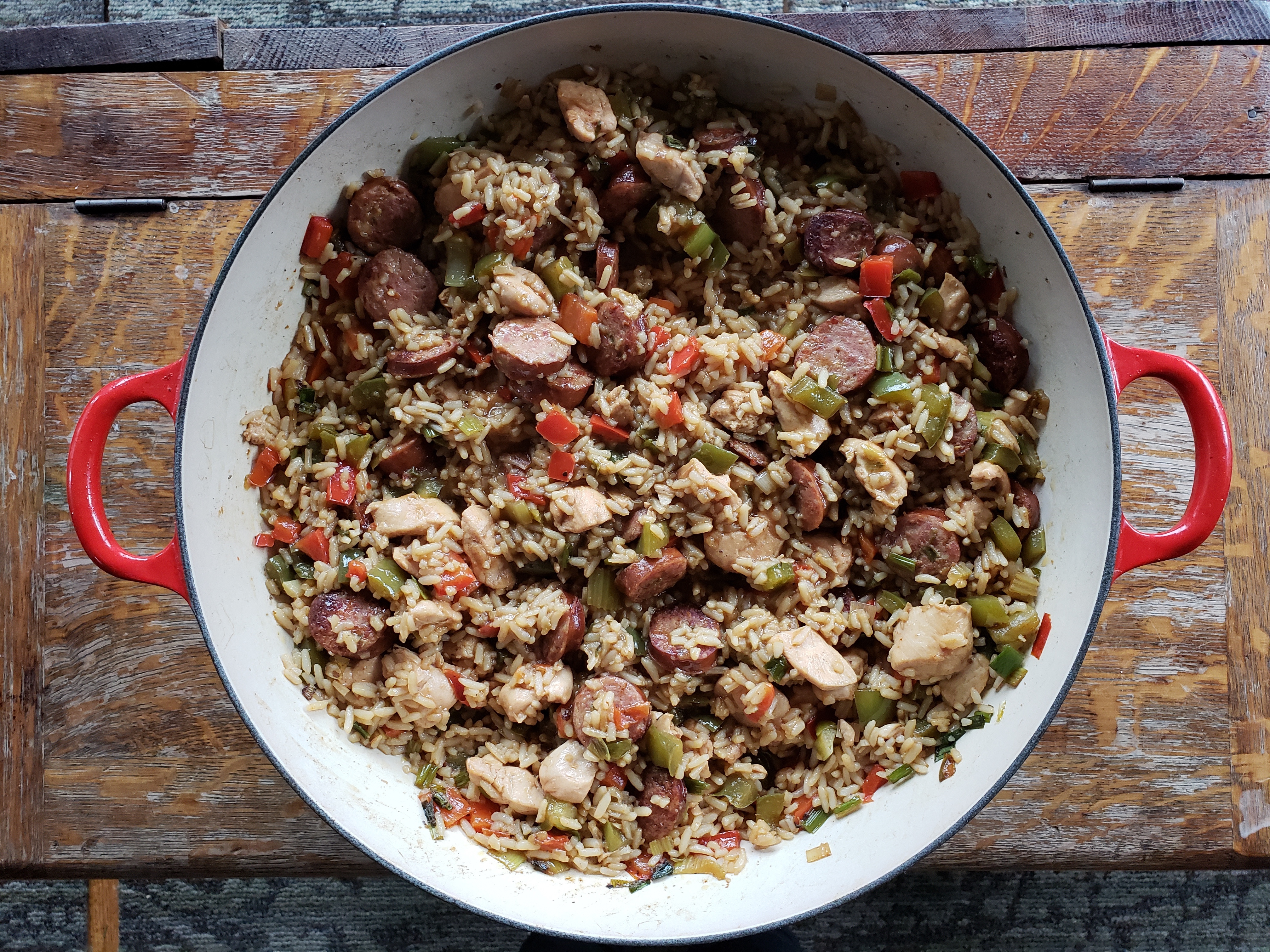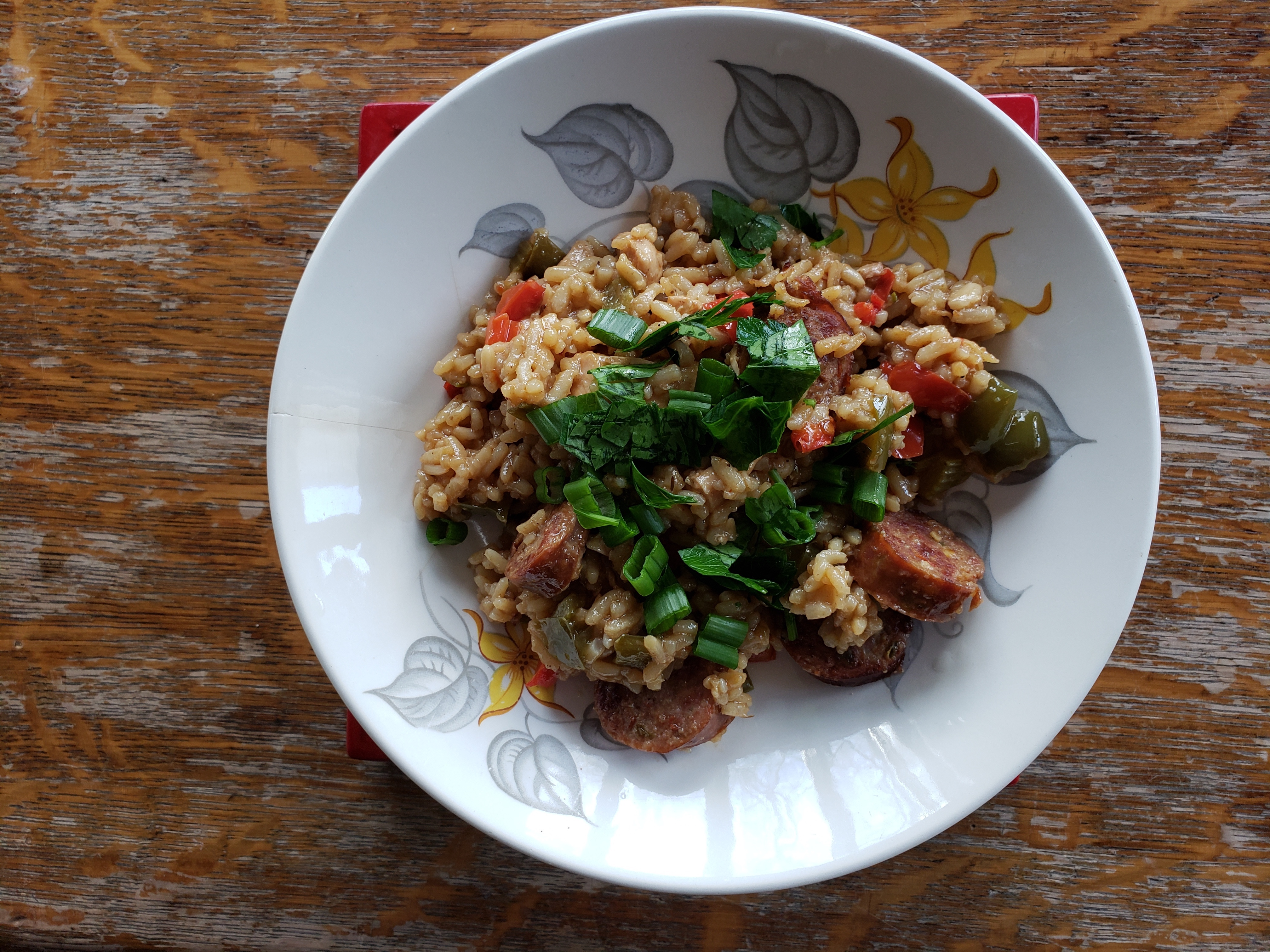Jambalaya Tips, Tricks, And Secrets From the New Orleans Food Authority
We may receive a commission on purchases made from links.
For the non-New Orleanians among us, Mardi Gras doesn't mean much, maybe some king cake and pulling out the brightly colored beads while getting our Lenten give-ups in order. But this year, in anticipation of a future NOLA trip, I wanted to get more into the spirit of the thing—and what better way to do that than make the traditional New Orleans dish of jambalaya? I mean, other than listening to Hank Williams.
So I contacted Judy Walker, longtime New Orleans food writer and former food editor at The Times-Picayune, to get the lowdown on the Big Easy's signature dish. Two seconds in, I was already learning new details, like the fact that there are two different types of jambalaya: red (with tomatoes) and brown (without). "Brown is traditionally the kind they make in Cajun country," Walker tells me. "It's a little more savory." It may seem incongruous with my Mardi Gras theme, but I decided to go with brown jambalaya, since I've never made it before, even though red is the traditional more New Orleanian version, according to Walker: "Louisianan cooking developed in the city, New Orleans, and in New Orleans, always one of the defining characteristics was to use these beautiful Creole tomatoes. We didn't necessarily put them in the Cajun food, they wouldn't easily have tomatoes." She adds, "Personally, I like the brown jambalaya," which clinched it for me.
Now that we have settled on my dish, Walker proceeds to school me on a variety of jambalaya lessons. Namely:
Brown your vegetables in the fat from the sausage
Slice your sausage in coin shapes and cook your vegetables in the oil leftover in the bottom of your pot. Then, says Walker, "If you can then brown your vegetables from the bottom of your cast-iron pot, that's really gonna help add the flavor." The more flavorful sausage the better. Walker says her personal favorite is a smoked andouille sausage.
Try a browning agent
I was unfamiliar with the browning-agent option, but Walker calls it "the cheater trick... I'm not recommending it one way or the other, I'm just telling you." She says that the go-to is a concoction called Kitchen Bouquet. "Some people would look down on anybody that would use it, and some people are just like, 'Whatever.'" I'm counting on it to add some browning to my brown jambalaya.
Don’t be afraid of the easy-rice shortcut
Yes, I have a great, foolproof method for making regular rice, but there's already a lot going on to prepare jambalaya. Chopping vegetables, seasoning, browning meats. If you don't want to add another step to your meal preparation, just embrace the Minute Rice. That way, you avoid the possible pitfall of underdone rice in your jambalaya, which can ruin the whole dish. Walker notes, "I have had jambalaya where they should have used the pre-cooked." She adds, "The reason that people use the pre-cooked is that it's just easier. The pre-cooked is a really good product and will always work for you. But people who have made jambalaya a million times will never use it, because they can always get the rice to work. It just depends on your personal skill level." And I think my skill level is at the Minute Rice level at the moment.
Season your jambalaya “just this side of hot”
Turns out that jambalaya is tough to overseason, because it's rice-based, so the rice is going to soak up all that flavor. Walker notes, "It's like trying to season a potato: You've got to put a lot of flavor in it."
So, how hot should you make your jambalaya? Walker tells me a story about Cajun seasoning in general: "A great Cajun friend of mine told me once that the spice level he goes for is 'just this side of hot.' You want it to go right up to the line." There are a lot of jambalaya mixes out there—you can even pick one up on your next New Orleans trip—or just use a Cajun or Creole seasoning from any spice store.
Even your brown jambalaya can be colorful
Jambalaya is the kind of dish where you can clean out your fridge: use up leftover meat, or veggies from the crisper. Throw some bacon in there, why not? Maybe some carrots along with that celery. But whatever you use, it's probably going to look more attractive and appetizing if it's colorful. Walker advises, " I like to use a red bell pepper as well as a green bell pepper, because it does tend to be kind of a brown dish." Not that that's necessarily a bad thing, as Walker quotes a local New Orleans chef: "Brown is the color of flavor."
Don’t overcook it
Some dishes like soup, stew, and chili just get better with time. Jambalaya is not one of those things. Mainly because if you let it cook it for too long, you'll cook all the moisture out of it; you want it nice and wet. So wait until the end of your cooking time to put the rice in so it doesn't overcook. Says Walker, "Once the rice is done, it's pretty much done."
But you’re not done yet
Before serving, make sure to check your seasonings and adjust accordingly. New Orleans chefs are big on last-minute tweaks, according to Walker: "Everybody here does that. Everybody. Always. It's at the end of every recipe, 'Taste and adjust seasonings as needed.'" You can also add some bright garnish to add even more color to that brown jambalaya, like chopped-up green onions, and chopped-up flat leaf parsley. (Use the white part of a scallion in the jambalaya and use the green part for the top, Walker suggests.)
Armed with this jambalaya crash course, I set out to make my first-ever brown jambalaya. I used the spiciest sausage I could find, which steeped my vegetables in tons of flavor as I sautéed them in the fat (You are also free to drain the fat if you are a health-minded person. I am not that person.) They and the browning agent added both flavor and color. With all that chopping and sautéing, I was happy to have the Minute Rice shortcut at the ready, so the whole thing really didn't take much cooking time at all for such a delicious, authentic dish.
In fact, brown jambalaya may be my new jam: I didn't miss the tomatoes at all. I adjusted my savory seasonings carefully, topped with tasty green things, and absolutely enjoyed the perfect meal to kick off my northerner Mardi Gras week.
Gonzales Jambalaya
Gonzales, Louisiana is home to a big jambalaya festival that happens every May. (Reprinted with permission from The Times-Picayune archive.)
Makes 6 to 8 servings
- 1 whole cut-up chicken, or any parts you like (about 3 pounds)
- Tony Chachere's or other Creole seasoning
- Oil for browning
- 1 pound smoked sausage, cut in coin shapes
- 1 onion, chopped
- 1 red and 1 green pepper, chopped
- 1 stalk celery, chopped
- 1 large clove garlic, minced
- 2 cups long-grain rice (or 2 cups ready-made instant rice)
- 1 capful liquid smoke
- 1/2 tsp. cayenne, or to taste
- Salt and pepper to taste
- 4 cups chicken broth
- Kitchen Bouquet for a browner color (optional)
Season chicken with Tony Chachere's or any other seasoning, and brown in oil. Remove chicken, add the sausage and brown it. Remove sausage, then sauté the onions, celery, peppers, and garlic in the sausage grease until onions are clear. Return chicken to pot and add broth, liquid smoke and, if you want a browner color, Kitchen Bouquet.
Bring to a rolling boil and add rice. Bring to a really hard rolling boil again, stir, and reduce heat to low. Cover and cook for 20 to 25 minutes. Once the rice is cooked through, adjust for taste, adding more salt, pepper, cayenne, or seasoning.


